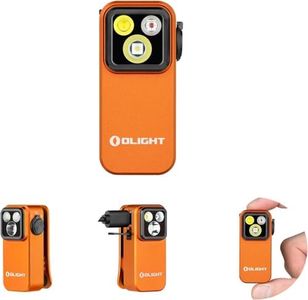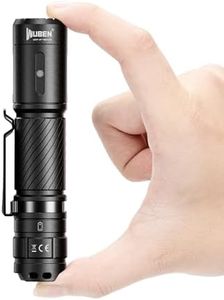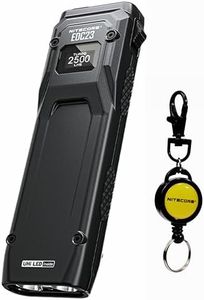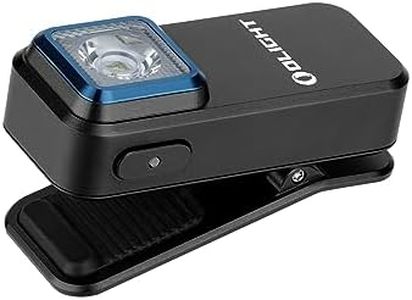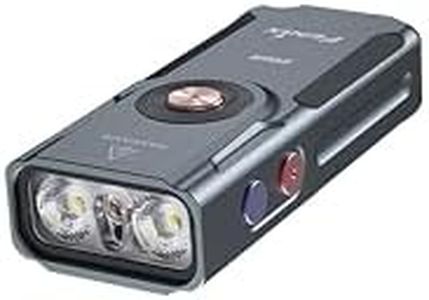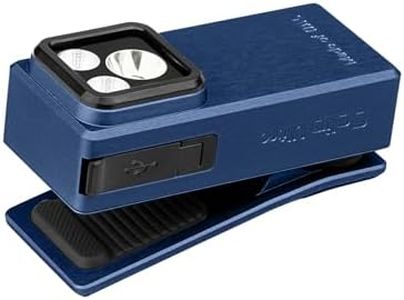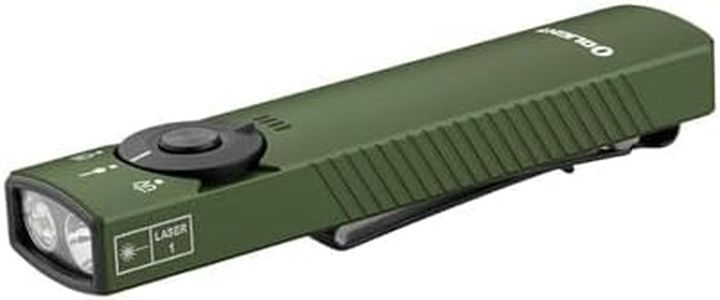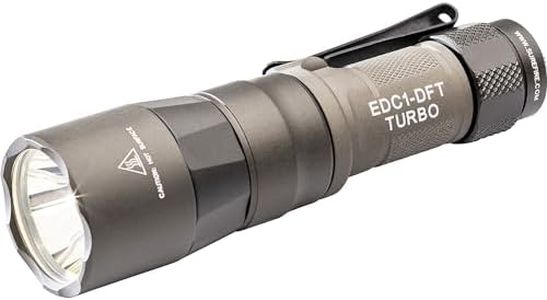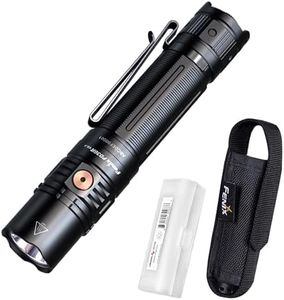We Use CookiesWe use cookies to enhance the security, performance,
functionality and for analytical and promotional activities. By continuing to browse this site you
are agreeing to our privacy policy
10 Best Edc Flashlights
From leading brands and best sellers available on the web.Buying Guide for the Best Edc Flashlights
Everyday Carry (EDC) flashlights are compact, portable, and designed to be carried with you daily for a variety of uses, from finding your way in the dark to handling emergencies or minor repairs. Choosing the right EDC flashlight involves balancing aspects like brightness, battery life, size, durability, and how easy it is to use. The right features for you will depend on how and where you plan to carry and use your flashlight, so think about your daily activities and the kinds of situations in which you'll need light.Brightness (Lumens)Brightness is measured in lumens, which tells you how much light the flashlight emits. A higher lumen value means a brighter beam. Low lumen flashlights (10-50 lumens) are suitable for close-up tasks like finding keys, while mid-range (100-300 lumens) work well for most around-the-house or outdoor needs. High lumen lights (500+ lumens) are very bright and good for outdoor adventures or emergencies, but can drain the battery faster. When choosing, consider situations you commonly face: for simple daily needs, you don't need extreme brightness, while outdoor or emergency use may require more powerful light.
Battery Type and RuntimeBattery type affects how long your flashlight can run and how convenient it is to keep charged or replace batteries. Common options include disposable (such as AA or AAA alkaline) or rechargeable (like Li-ion or built-in USB rechargeable batteries). Disposable batteries are easy to replace on the go, while rechargeables save money and reduce waste in the long run. Runtime, often listed for different brightness modes, tells you how long the light will last before needing a new battery or recharge. Consider how often you'll be able to charge or buy batteries—if you use your flashlight often, longer runtime and rechargeability can be very handy.
Size and WeightSize and weight determine how comfortable the flashlight is to carry every day. Ultra-small and light models can clip to your keys or pocket easily, making them nearly unnoticeable when not in use. Larger models may offer more brightness or longer battery life but can be bulky in your pocket. Think about your typical clothing and where you plan to keep the flashlight: the best EDC flashlight for you will be one that’s always with you and not left at home because it’s too big or heavy.
Durability & Build QualityDurability refers to how well the flashlight can handle everyday bumps, drops, water exposure, and rough handling. Look for flashlights made from strong materials like aluminum or stainless steel, and check ratings such as IPX (water resistance) or impact resistance. For everyday use, it’s important your flashlight survives being dropped or getting wet in the rain, so higher durability is great for those with active lifestyles or rough environments. If you mostly use your light indoors, you might prioritize lightness over extreme ruggedness.
User Interface (Switch Type and Modes)The way you turn on and operate the flashlight matters. Some have a single button or twist action, while others offer multiple modes (low, medium, high, strobe). Simpler interfaces are good if you want quick and easy access to light, while more advanced models allow you to choose different brightness levels for different situations. Choose a system that feels intuitive and matches your likely uses—if you only need quick illumination, less is more, but if you want more control, look for multiple modes.
Beam PatternBeam pattern refers to the shape and spread of light—the beam can be wide and flood-like, illuminating a broad area up close, or narrow with a focused spot that throws light far. Wide beams are useful for tasks like reading or lighting up a room, while focused beams are good for spotting things at a distance. Your choice depends on whether you want to see a large area closely or focus on a small spot far away, so think about how you expect to use the flashlight most.
Carrying OptionsHow you carry the flashlight—such as a pocket clip, keychain ring, magnetic base, or lanyard—impacts how convenient it is to have on hand. Keychain flashlights are great if you always carry keys, while pocket clips suit pants or shirt pockets. Some flashlights have magnets for hands-free use on metal surfaces, which can be helpful for work tasks. Pick a carrying method that fits your habits and makes sure you’ll always have the light nearby when needed.

